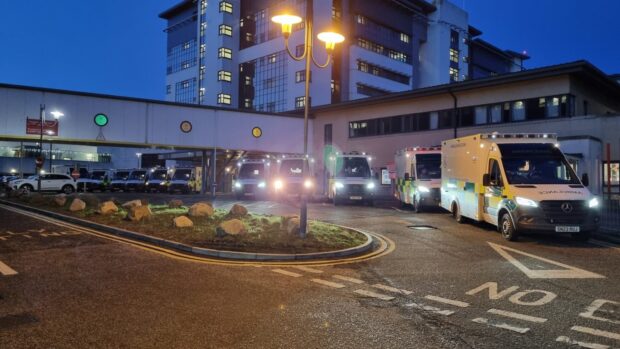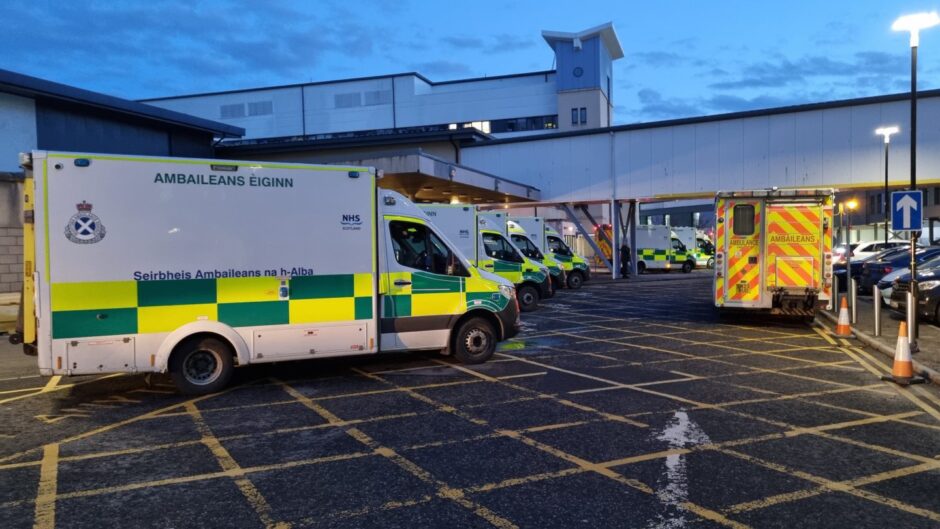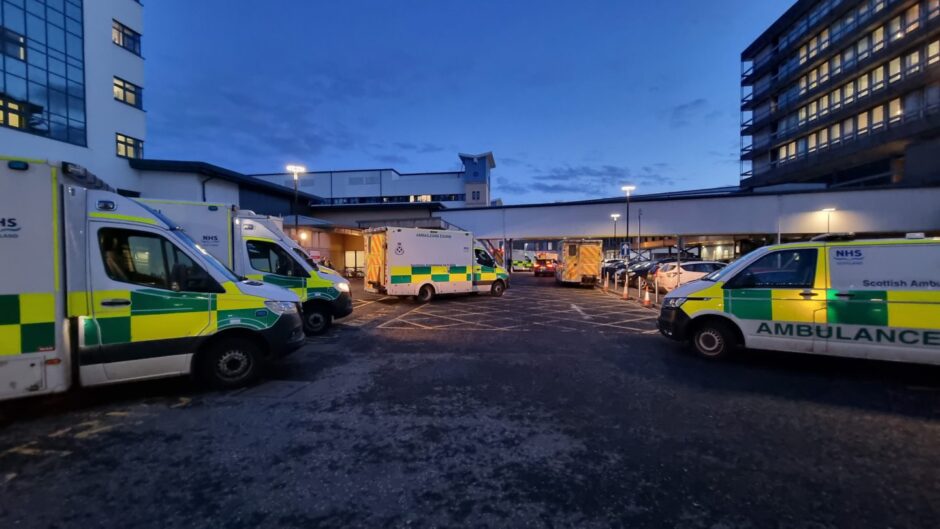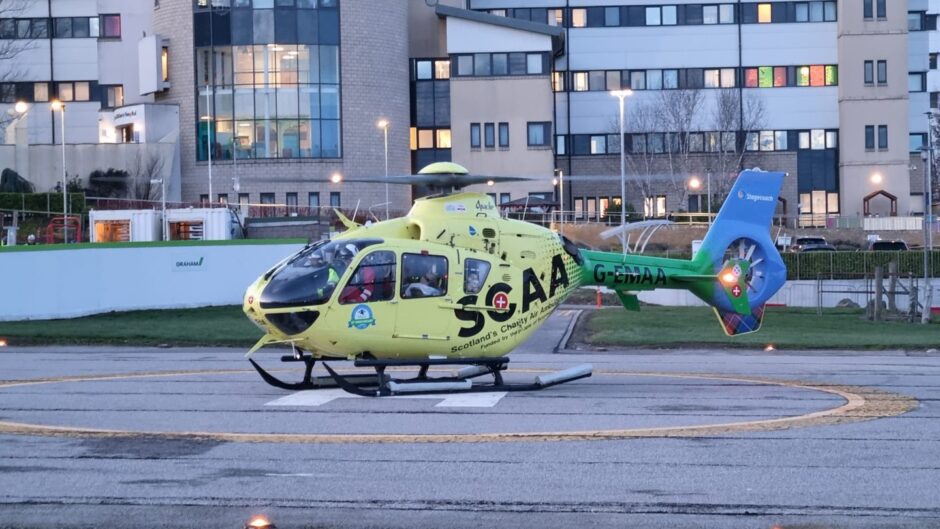Up to half the north-east’s ambulance fleet was “stuck” outside Aberdeen Royal Infirmary (ARI) tonight.
As many as 18 ambulances were stationed outside the city’s flagship hospital at one point this evening as ambulance crews waited to hand over patients.
A source told The Press and Journal: “The issue is that there are too many people going to the hospital, and it doesn’t have enough beds.
“I don’t want to scare members of the public, but the reality is, there’s a significant lack of exposure to emergency calls.”
Recent inspection praised staff who are under ‘significant pressure’
Healthcare Improvement Scotland (HIS) visited the Foresterhill site in October last year, where inspectors noted staff were “experiencing a significant range of pressures” including increased hospital admissions meaning many patients were being cared for in corridors.
Just a few weeks before that it was revealed that ARI had recorded Scotland’s longest ambulance turnaround time of 2023.
The inspectors said that despite the challenges faced though, staff were focused on providing “safe and compassionate care” and treated patients with “respect, dignity, and compassion”.
An ambulance insider, who works on the road, laid bare tonight’s situation to The P&J.
As vehicles lined up waiting to admit their patients, an air ambulance also landed on the Foresterhill helipad transferring an injured person for treatment.
“At one point, 18 ambulances were stacked up at ARI while ambulance crews were waiting to hand over their patients to the hospital,” the insider claimed.
“It could be up to half of the north-east’s fleet of ambulances tonight that have been stuck in one place and unable to leave while that’s happening, instead of supporting and protecting the communities we serve.
“Many of my colleagues share a concern that we’re unable to help those most in need because we’re tied up at the hospital and not where they need us to be.
“The issue is that there are too many people going to the hospital, and it doesn’t have enough beds.”
Healthcare staff are being “broken” by demand, source claims
“ARI staff are being broken by the demand and ambulance crews are being taken off the road to look after the hospital’s patients until there’s room for them to be treated by doctors and nurses,” the insider added.
“But we’re not trained to look after hospital patients. That’s not our job.
“Our job is to look after someone who is acutely unwell, get them into a hospital in a stable condition, release them, and get back out into our communities. We’re not getting to do that and it’s just not what we signed up for.”
They also claimed that ambulance crews can now find themselves tied up with just one job during their entire shift, compared with more than a dozen during previous shifts.
“That can translate into a lack of experience in road crews,” the insider added, explaining: “I don’t want to scare members of the public, but the reality is, there’s a significant lack of exposure to emergency calls.”
‘Times are challenging – but seriously ill are admitted rapidly’
A spokesperson for NHS Grampian said: “Ambulances having to wait at the front door is not what we aim for – for our patients and indeed our colleagues at SAS. We apologise to anyone who has been impacted by this.
“The reasons are challenging. At certain, often unpredictable points, we experience periods of exceptionally high demand at the emergency department.
“Our hospitals are currently facing sustained pressure due to the volume of acutely ill patients arriving, delayed discharges and staffing pressures. This can unfortunately lead to ambulances having to wait at the front door, as we are unable to admit more patients to the department.
“During periods of intense pressure, cases are triaged as normal with those facing life-threatening situations – such as heart attacks or strokes – continuing to be admitted rapidly for life-saving treatment as an absolute priority.”
It’s understood that the number of ambulances stationed outside ARI reduced throughout the evening, after The P&J asked NHS Grampian for a comment at around 6pm.
The spokesperson added: “The very nature of unscheduled care and it’s peaks and troughs of activity, has resulted in the number of ambulances stacking was reduced by half in the aforementioned two-hour period.
“This is still not ideal and we are working hard with all partners to resolve this.”
A spokesperson for the Scottish Ambulance Service added: “The Scottish Ambulance Service and NHS Grampian communicate daily and have joint escalation plans in place, which manage the risks of increased ambulance delays at hospital.
“A number of other steps are also being taken to minimise ambulance waiting times, including discharge planning to maintain patient flow and increasing alternative care pathways for ambulance clinicians to support patients in the community.”




